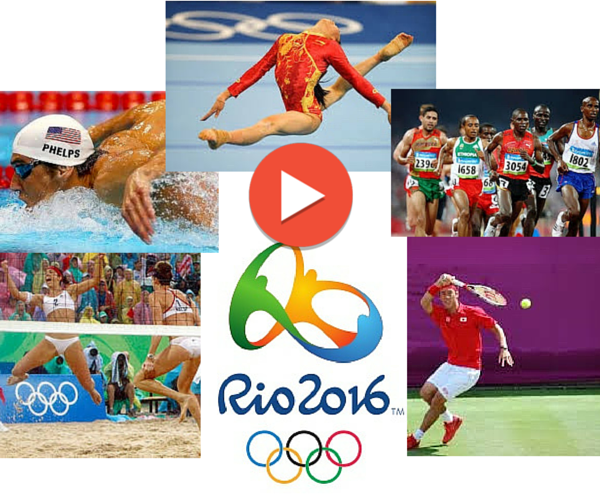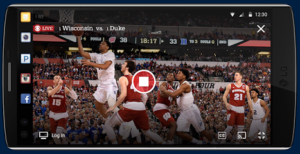
In the 2012 London games 21.3 million hours of Olympic coverage were viewed on mobile, and online video raked in another 1.5 billion views. Those numbers are sure to spike in 2016 as real-time, on-demand viewing is the new norm. Not acknowledging and incorporating that into major televised events can have ill-fated consequences as NBC found out on Friday during the Opening Ceremonies of the Rio 2016 Olympic Games. The combination of a 1-hour tape delay, and airing 8 commercial breaks in the first 65 minutes of coverage had many viewers sarcastically thanking NBC for “showing the Olympic Opening Ceremony in the short breaks between commercials.” Early returns show viewing figures slumped to a 20 year low as viewers simply switched to channels and mediums showing the event in real-time.
NBC will surely rebound from this mini-brand crisis. The excitement of the games has taken over and the next internet-rage inducing event is always right around the corner. But it speaks to the larger issue of how brands must pivot from traditional, scheduled intake of content and events – where advertising can be reliably pushed in front of consumers – to the new norm of real-time, on-demand viewership – where brands must be creative and innovative to get their message across and have it resonate. Below are a few principles brands can follow to capitalize and optimize on this new norm.
Track Paid & Earned Media Meticulously. NBC lucked out this year, as Rio is only one hour ahead of the Eastern Standard Time Zone. Since there isn’t a huge disparity between the timing of events and when they can be aired in prime time, brands can be confident their paid media spends during prime time events are reaching a mass audience. (It will be a different story for the 2018 Winter games in Pyeongchang, South Korea, a full 13 hours ahead of the east coast of the United States.) And if your ad hits, you’ll want to be able to track and quantify what people are saying about your brand across various mediums. With brands spending hundreds of thousands of dollars per commercial spot in the 2016 games, it makes sense to empower your marketing teams with immediate visibility into campaign performance.
Be Creative and Innovative with Ad Content. A truck traversing a mountainous road, beautiful people drinking Pepsi on a beach, a family at McDonald’s. Sound familiar? It should, this is the typical ad fare for certain brands and industries. But on the big stage, it pays to stand out. NBC’s coverage issues aside, 30 million people still tuned in to the opening ceremonies this year (down from 40.7 million in London in 2012). However you slice it, that’s a lot of eyeballs, and it’s a brand’s job to stand out from the crowd. Create stories that evoke emotion – research has shown that targeting specific emotions increases connection with, and virility of, an ad. P&G is the perfect example of this with their ad thanking Mom’s that debuted at the 2012 games.
They targeted a universal emotion, love and gratitude for Mom’s and all their sacrifices, and they’ve been going back to the well with the same campaign in each subsequent Olympic Games. Stand out, be creative and audiences will rewards you for it.
Don’t Underestimate the Power of Paid Social. A friend of mine (an avid NBA fan) and I were discussing the upcoming Rio games and he was understandably excited about the USA Men’s basketball team. At a certain point though he remarked, almost dejectedly, “Although I’ll probably see the coolest dunks and highlights on Facebook before I can even watch the game.”
He’s not far off. Basketball is a highlight reel sport. Dunks, 3-pointers, behind the back passes, all lend themselves perfectly for bite-size video highlights to consume in social media feeds. And many outlets distributing these snippets will require users to watch an ad before consumption. Ensure that your ad spend does not overlook the power of paid social advertising during real-time events. While viewers are rejecting standard commercial breaks during periods of content consumption, they are still ok with viewing a short ad prior to viewing a piece of online content. And if your message is powerful and compelling from the start, they may not even skip it.
Use Real-Time Tracking to Capitalize on Trends. There are going to be upsets. There are going to be moments of triumph, moments of heartbreak, moments of controversy throughout the next two weeks. Ensure that you are effectively monitoring real-time trends so that you and your brand can be in on the conversation as it happens. You don’t even necessarily have to pay to push ads in response to real-time trends (although it’s certainly an option) – Oreo taught us how far a single tweet can go when the lights went out in the 2013 Super Bowl. The key is to insert your brand’s take on a given situation as it’s happening. It shows consumers you care enough to be interested in the things they are. A humorous, quirky or novel take on a real-time situation can cement your brand in the mind of a consumer for years to come.
Use Common Sense. It goes without saying, or does it? When the world is watching, a mistake, even a small one, can’t be swept under the rug. We see it time and time again, and it’s why #BrandFail is such a popular hashtag on Twitter. There is a fine line between pushing the envelope, being innovative vs being inappropriate, or just plain wrong. And it’s not always easy to spot the line. But I find the use of some simple common sense can avoid most faux pas. Would my parents be ok with this ad? How about my kids? When in doubt, ask around. Everyone is a prisoner of their own perspective, driven by upbringing, race, gender, etc. Share your ad with select colleagues and friends of different backgrounds to see if someone else has a different (possibly offensive) take on your ad. It’s a small step that can pay dividends in brand crisis avoidance.
P.S. Oh, how’d my friend know about Oksana Baiul? Her Mom told her. She had called home for some reason, and her Mom had just watched it in real-time on television. What a pioneer.



